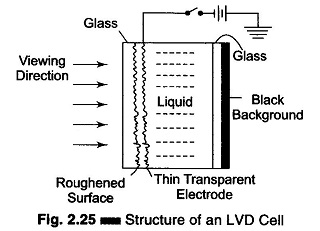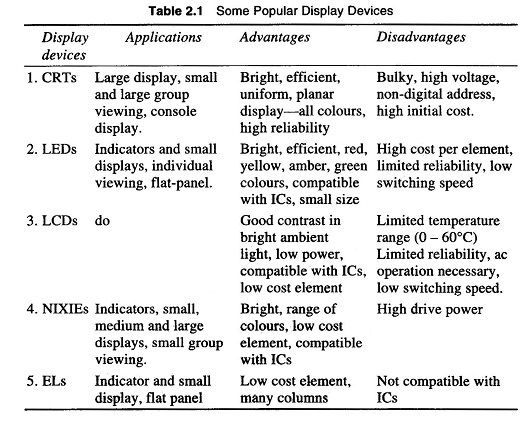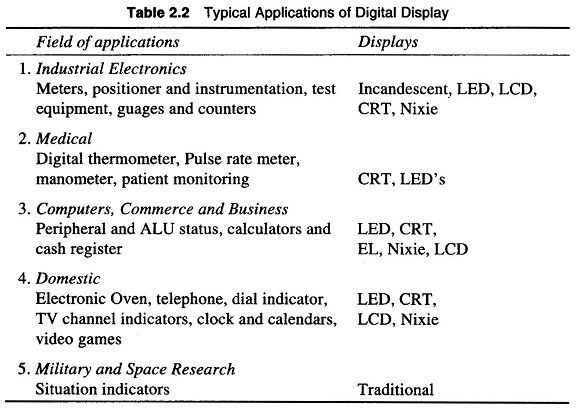Structure of Liquid Vapour Display (LVD):
Liquid Vapour Display (LVD) are the latest in economical display technology. They employ a new reflective passive display principle and depend on the presence of ambient lights for their operation. Figure 2.25 gives the structure of a typical LVD cell.
It consists of a transparent volatile liquid encased between two glass plates and side spacers. The rear glass plate has a black background and the front glass surface in contact with the liquid is roughened,
so that the liquid wets it, i.e. in its simplest form, an LVD consists of a roughened glass surface wetted with a transparent volatile liquid of the same refractive index as that of the glass. The rear surface is blackened.
The transparent electrode is heated by using a voltage drive, which is the basis for the display function.
In the OFF condition of display with no voltage applied across the transparent electrode, the viewer sees the black background through the front transparent glass electrode and the liquid.
To achieve an ON condition of the display, a voltage is applied to the transparent electrode. This causes sufficient heat in the electrode, which evaporates the liquid in contact with it, and a combination of vapour film and vapour bubbles is formed around the roughened glass surface. As the refractive index of vapour is approximately 1, there is a discontinuity established at the interface between the front glass plate and the liquid, which gives rise to light scattering. This makes it a simple display device.
The organic liquid selected for Liquid Vapour Display should have the following features.
- Refractive index close to that of the glass plate.
- Minimum energy for vaporising the liquid in contact with the roughened
The electrical heating of a thin film of liquid adjacent to the roughened surface using transparent electrodes and the applied voltage, makes it an unusually good display with a better contrast ratio than an LCD. The speed of operation of LVDs is low. A summary of some important display devices is given in Tables 2.1 and 2.2.


